Rome wasn’t built in a day — and neither was Rolex, Patek Philippe, Jaeger-LeCoultre and other watch manufacturers praised for their vertical integration and lauded for their array of in-house calibers. While we all applaud the handful of brands that bring new and increasingly complicated calibers to market virtually every year, we also should take note of other brands, many of them smaller, independently owned, or known throughout their history more for outsourcing their movements, that are taking a more incremental approach. In this series of articles, we take a look at five brands — three Swiss, two German — that are taking it slow and steady. This week, we turn our focus to Germany’s Tutima, which began in-house movement production in earnest upon its much-heralded return to Glashütte in 2013.

Tutima approached the challenge of building up a portfolio of in-house calibers in a substantially different way than did last week’s spotlighted company, Oris, and many others. Rather than building a base and adding layers of complication in subsequent movements, Tutima shot for the horological stars right out of the gate, building the first minute-repeater caliber ever to be made entirely in Germany, and using it as a template for complications of far less grandiosity.
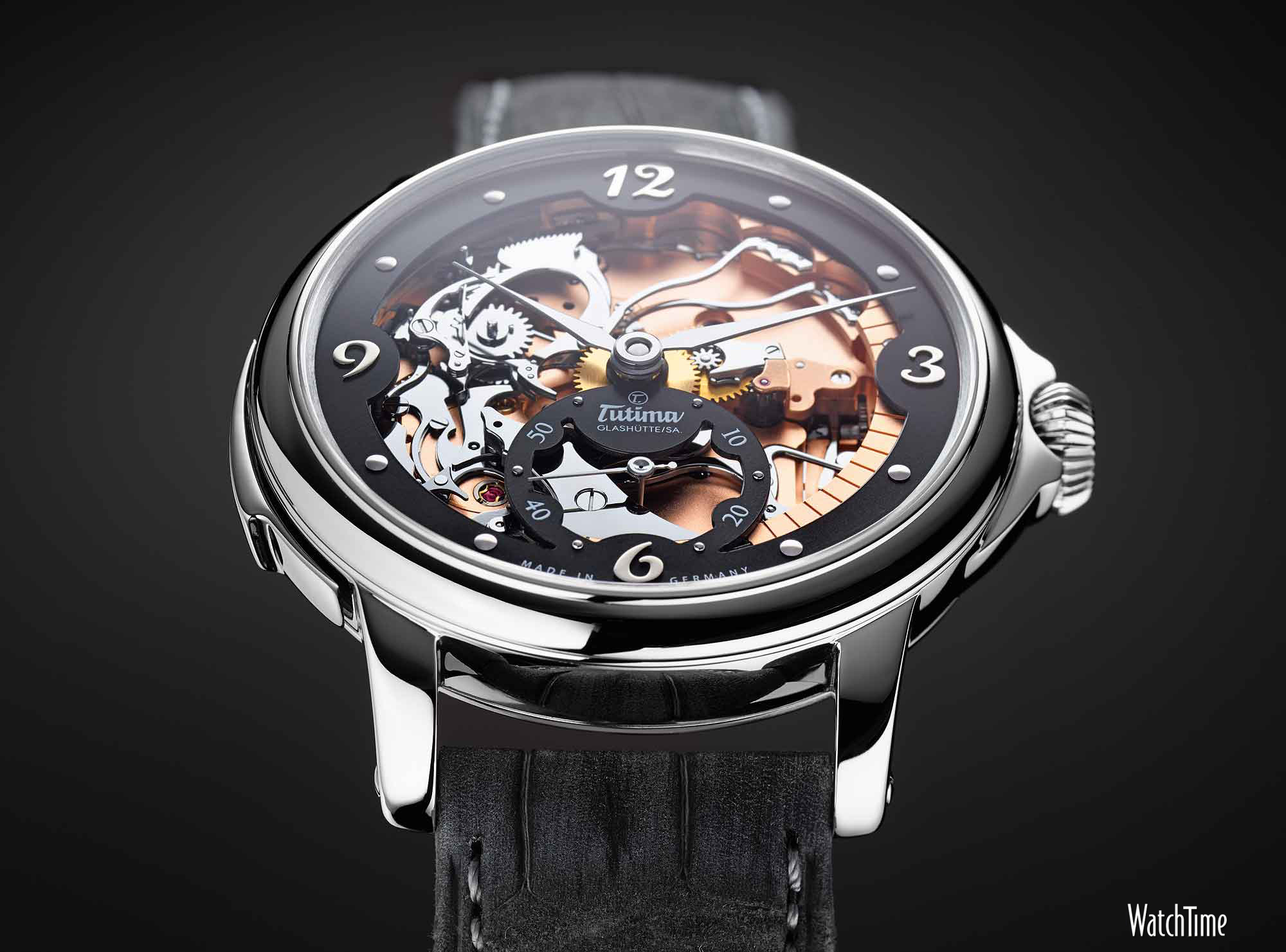
The manual-winding, 550-plus-part Caliber 800 inside the Hommage Minute Repeater (more details on it here) is notable for its meticulously handworked parts and finishing — including filigreed edges, polished screw heads, and a hand-carved relief engraved balance cock — as well as its distinctive architecture, in which two mirror-polished hammers strike gongs attached to the case, rather than the movement itself, for optimal richness and clarity of tone. This groundbreaking high complication, three years in the making, was not meant to be a one-off novelty trumpeting Tutima’s watchmaking expertise, but the forerunner of a whole series of new-generation manufacture movements for a German company that had been largely dependent on Swiss-made ébauches since the Cold War era.

Stripping the complex Caliber 800 down to its most basic functions — central hours and minutes and small seconds — yielded Caliber 617, the movement that made its debut in Tutima’s classically elegant Patria timepiece, ensconced in a 43-mm 18k rose gold case, behind a white opaline dial with an extra-large calibrated seconds subdial at 6 o’clock. The movement’s traditional Glashütte three-quarter mainplate has a golden finish; the hand-polished, skeletonized balance cock boasts hand-beveled edges, the oscillator beats at 21,600 vph, and is paired with a Breguet hairspring with terminal curve. In another version of the Patria, released the same year, Tutima added another “quiet but useful” complication, the display of a second time zone, which appears in the same subdial as the seconds. The watch is called the Patria Dual Time, and the movement has been dubbed Caliber 619.
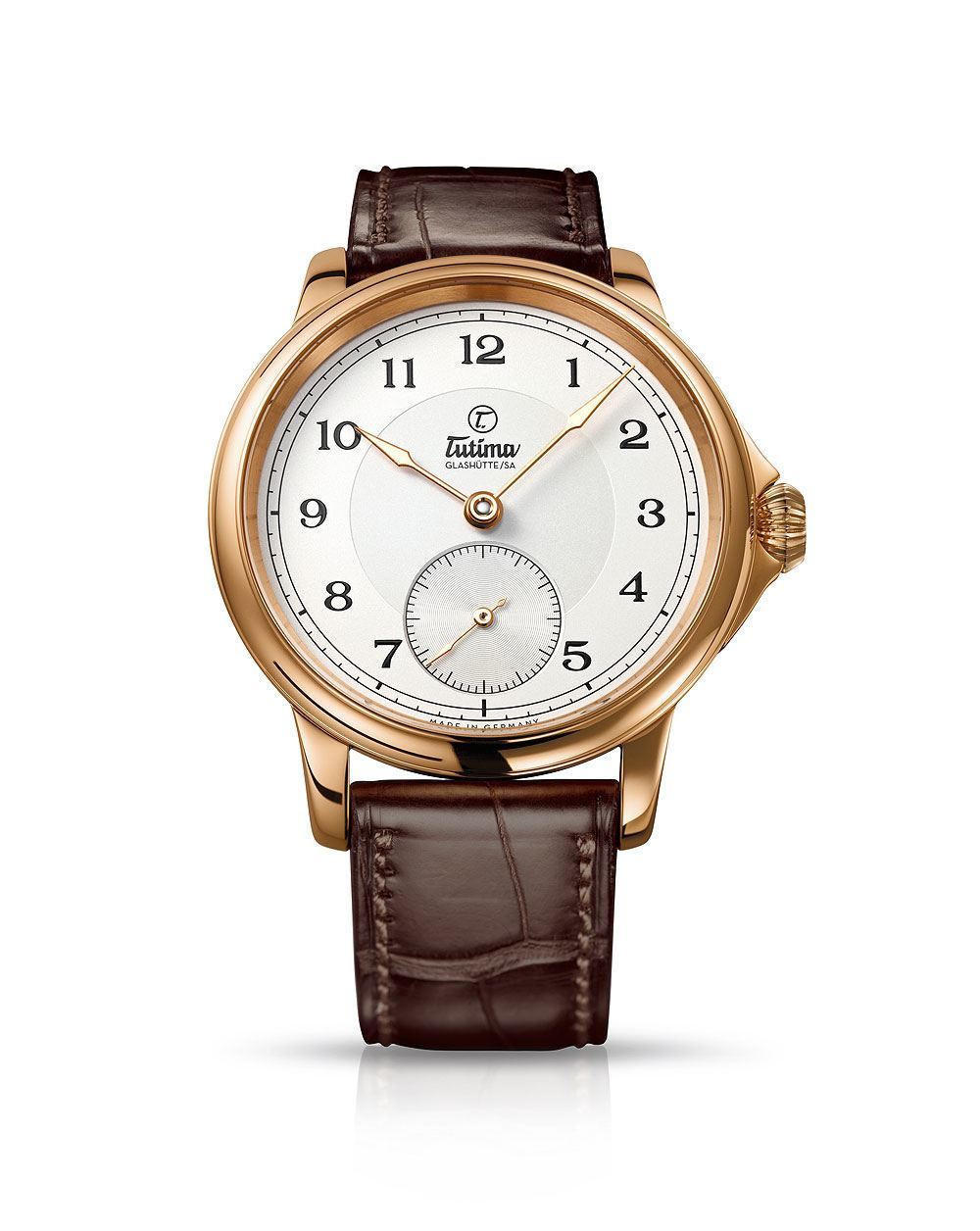
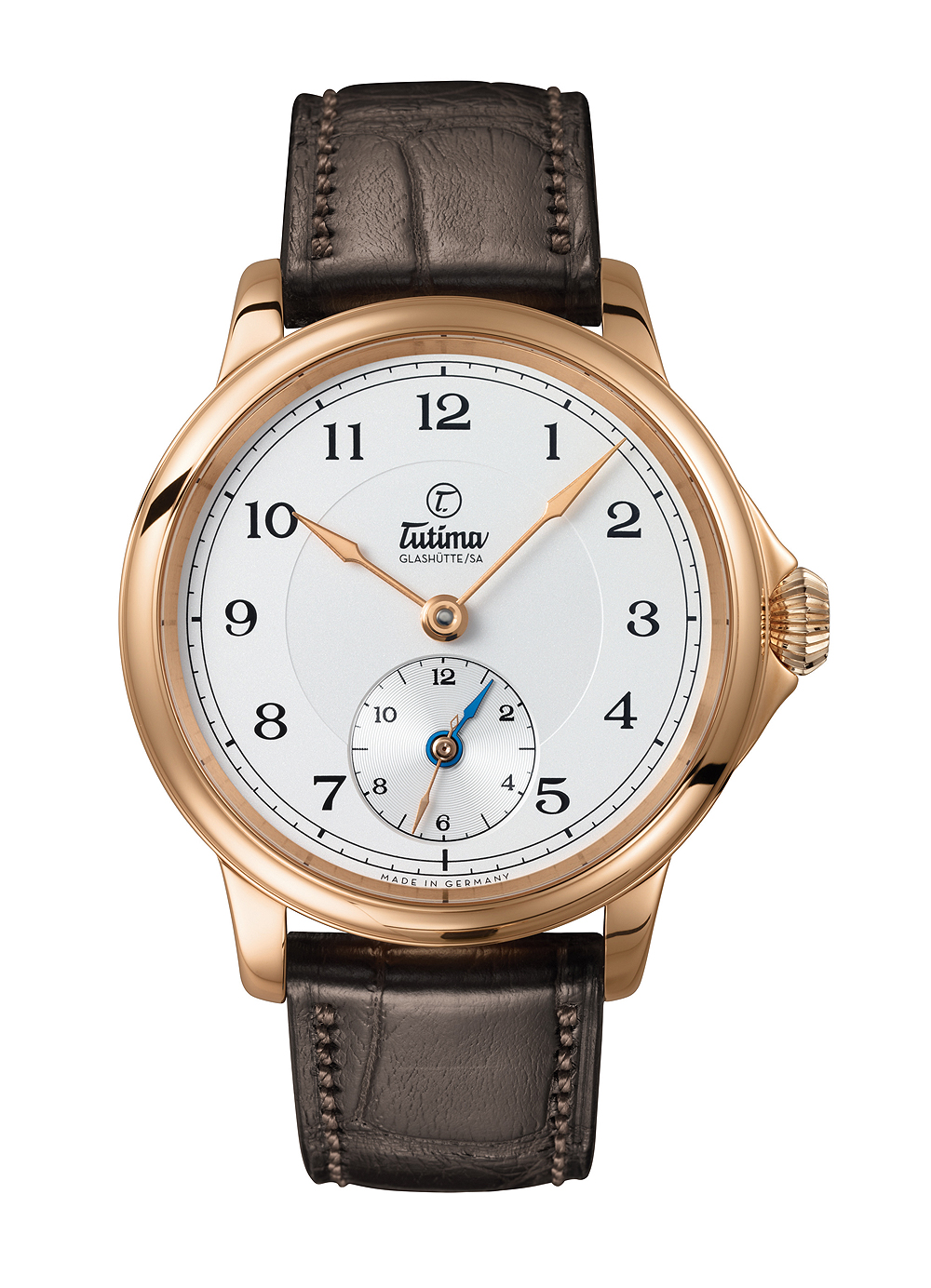
Debuting in 2018 was the Patria Power Reserve, outfitted with another iteration of the base Hommage movement, called Caliber 618. In addition to the central hours and minutes and small seconds, this timepiece’s asymmetrical dial hosts at the 9 o’clock position an indicator for the movement’s 65-hour power reserve — an eminently useful feature in any watch with a manual-winding movement.
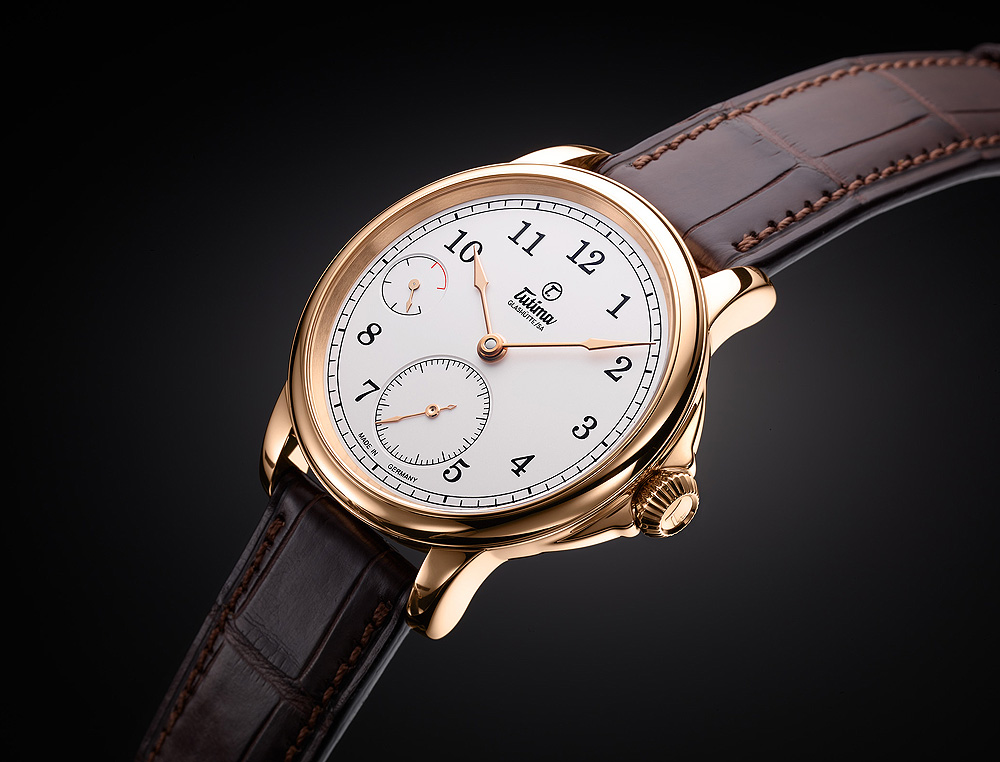
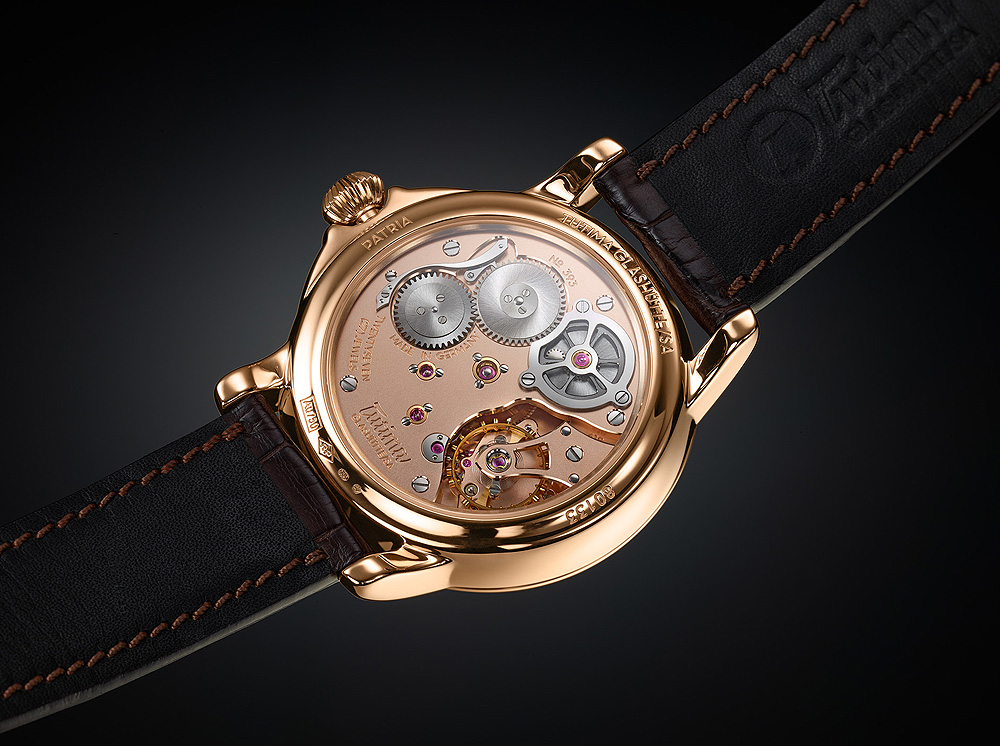
But it is the manufacture Caliber launched by Tutima in 2017 that is perhaps the one that most embodies the spirit of the brand’s history, which is inextricably linked to military aviation. The manually wound Caliber T659 makes its debut inside the Tutima Tempostopp, a flyback chronograph that represents a contemporary and decidedly luxurious update of the iconic Fliegerchronograph, worn by German pilots in the 1940s, and its now-legendary movement, the Glashutte UROFA Caliber 59. “Tempostopp” is the German word describing the flyback function, which allows the wearer to start, stop, and return to zero the chronograph’s second hand with the push of a button to immediately begin timing a new interval. The watch, whose elegantly balanced bicompax dial features parallel subdials at 3 and 9, marks Tutima’s 90th anniversary and is limited to 90 pieces.
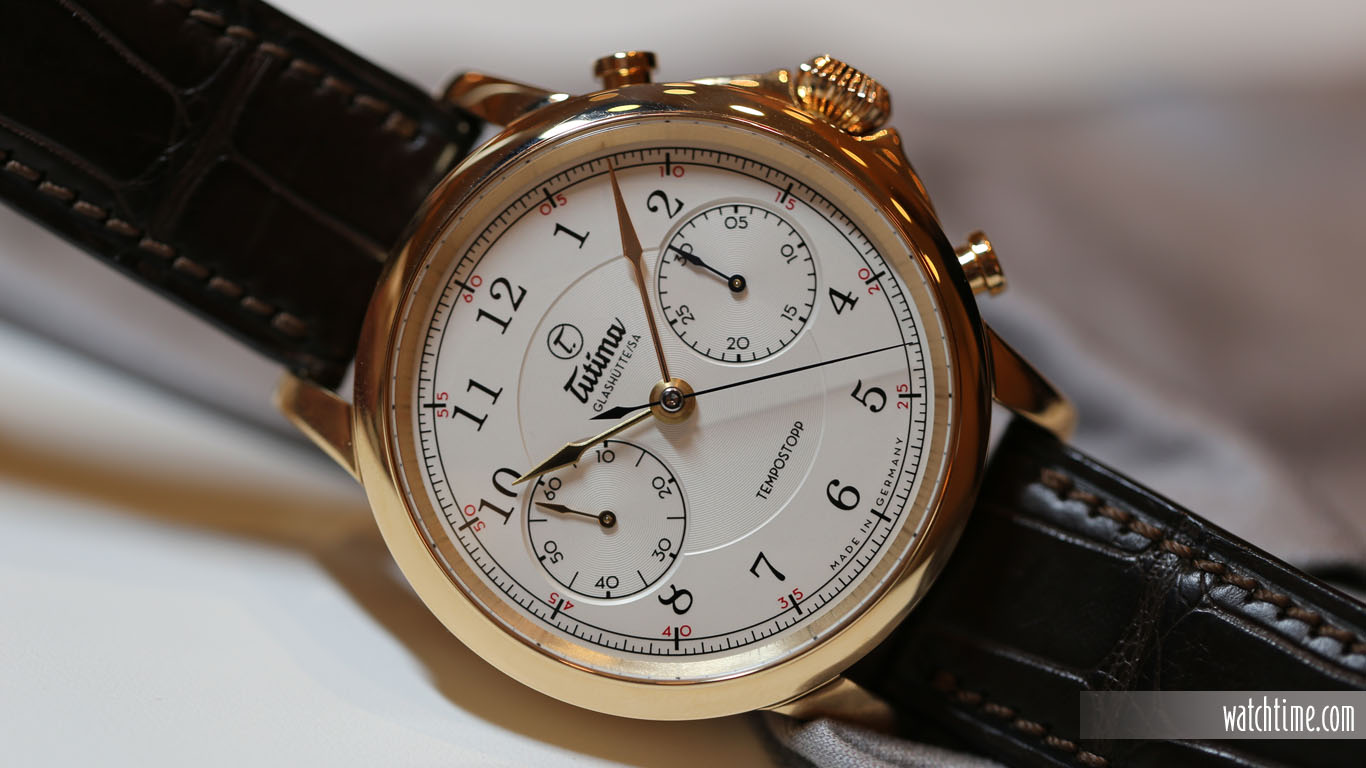
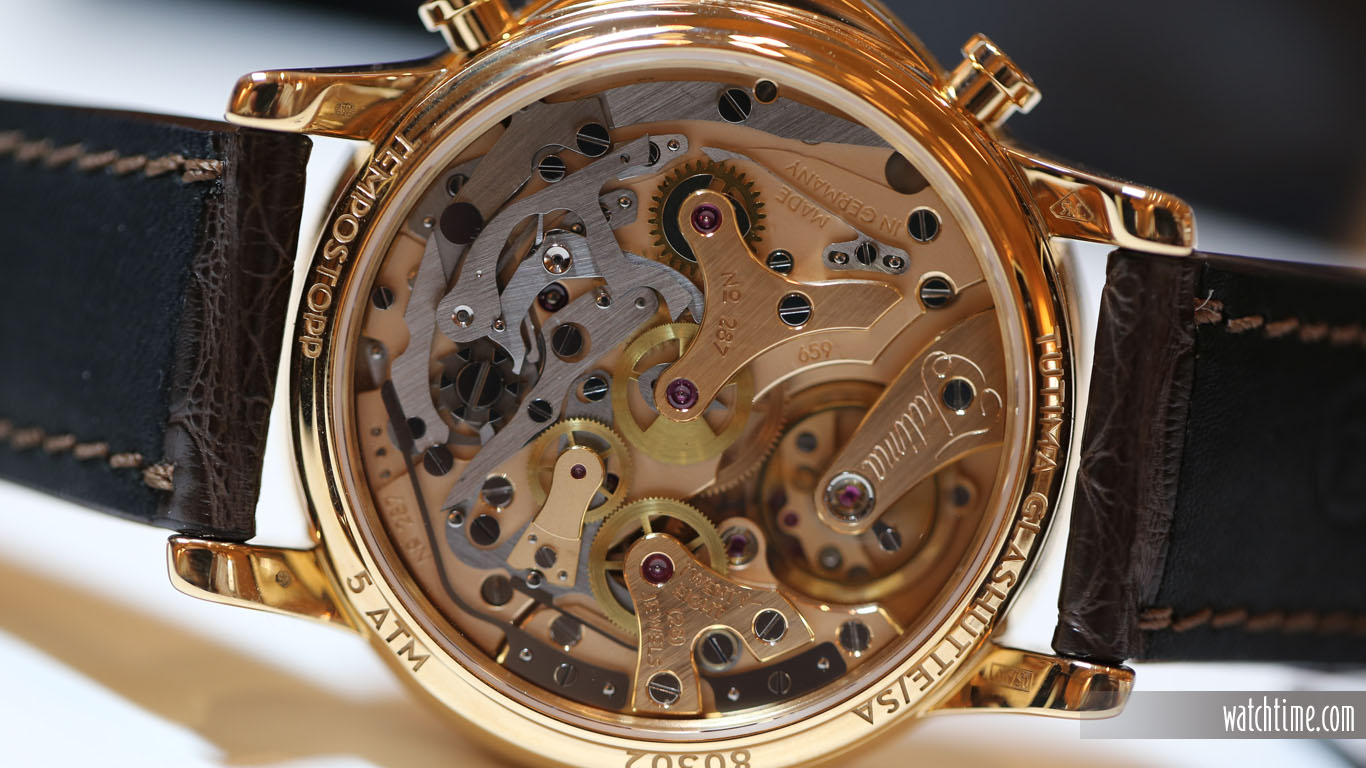
“The design concept for the new Tempostopp started from the inside out,” says Tutima USA, Inc. President Gustavo Calzadilla. “The objective was first to re-introduce the legendary UROFA Caliber 59. For this we had to reverse-engineer a movement for which no tool, parts or blue prints existed. Each of the 220 movement parts was reproduced individually to bring this caliber back to life. From there, Tutima created a solid gold case and stunning dial which maintains some of the characteristics of a Fliegerchronograph but in a more elegant interpretation. The result is the perfect marriage of elegance, heritage and craftsmanship.”
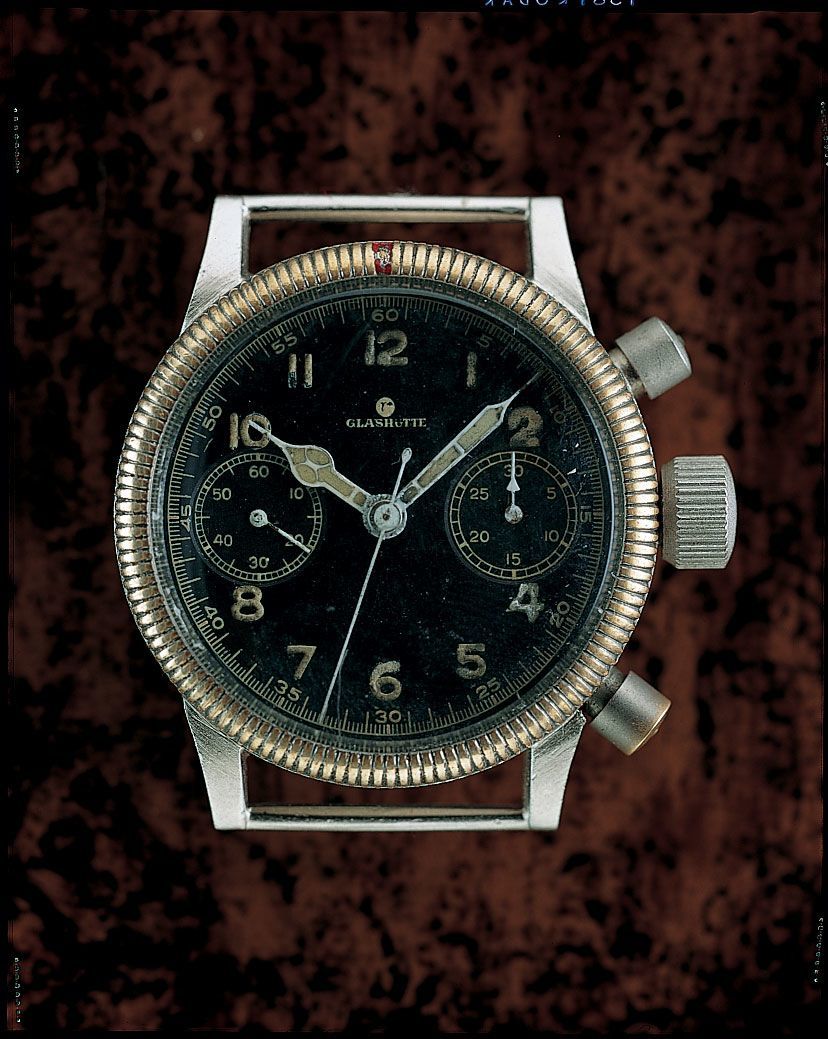
If one were so metaphorically inclined, one could look at Tutima’s multi-year movement-making strategy in terms of test piloting: it jumped to the highest altitude before flying close to the ground and settling into a comfortable cruising altitude. We will all see to what new heights its watchmaking expertise will soar next.
Next week: We extend our stay in Glashütte to explore the growth of in-house movement making at Nomos. For last week’s “Building the Foundation” feature on Oris, click here.

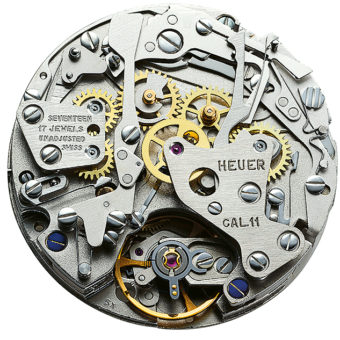



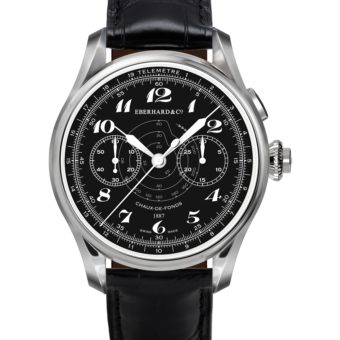
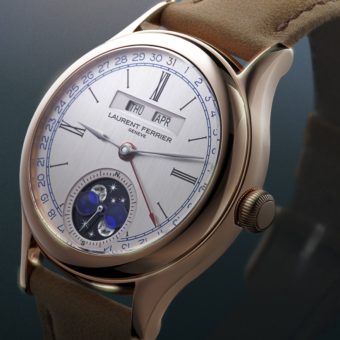
Great !!!
Good read. Shows that there are other German watchmakers other than the well known ones who can make an in-house movement. Posted this at the forum